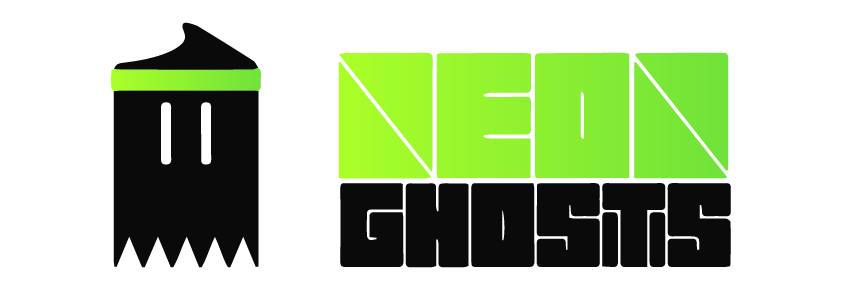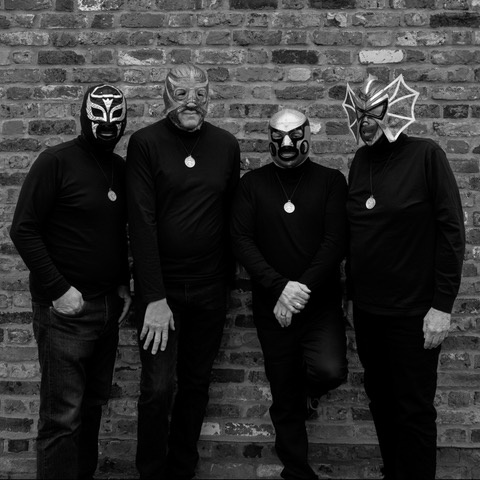Los Straitjackets sind seit über drei Jahrzehnten Amerikas führende Surf-Rock-Band. Sie haben ihren Combo-Sound um die ganze Welt getragen, Instrumentalalben aufgenommen und dabei auch die Rolle einer All-Star-Begleitband übernommen, insbesondere über ein Jahrzehnt lang für Nick Lowe. Gerade hat die Band mit „Somos Los Straitjackets“ ein wunderbares neues Album veröffentlicht. Reinhören lohnt sich – und reinlesen. Und zwar in diese My-Soundtrack-Episode, die Gitarrist Eddie Angel mit uns auf die Beine gestellt hat.
“Johnny B Goode” – Chuck Berry
Chuck Berry is to Rock’n’ Roll what Hank Williams is to Country music and Muddy Waters is to the Blues: an avatar who personifies a musical genre.
anzeige
I don’t remember the first time I heard Johnny B Goode, it seemed to always exist, simple and ubiquitous as a cheeseburger and milkshake. It’s the perfect Rock’n’Roll record. Rock’n’Roll has never been improved on. A recording of Johnny B Goode was included on a Golden Record aboard the NASA Voyager space probe launched in 1971 to carry a message and cultural snapshot of Earth to any extraterrestrial life that might find it. I’m sure when the Aliens hear it they are going to reply back to Earth: “send more Chuck Berry”.
„Eine Ikone“
Chuck Berry ist für den Rock ’n’ Roll das, was Hank Williams für die Country-Musik und Muddy Waters für den Blues sind: eine Ikone, die ein ganzes Musikgenre verkörpert.
Ich kann mich nicht erinnern, wann ich „Johnny B. Goode“ zum ersten Mal gehört habe. Es schien immer da zu sein, so einfach und allgegenwärtig wie Cheeseburger und Milchshake. Es ist die perfekte Rock ’n’ Roll-Platte. Rock ’n’ Roll wurde nie übertroffen. Eine Aufnahme von „Johnny B. Goode“ war auf einer Goldenen Schallplatte an Bord der NASA-Raumsonde Voyager, die 1971 gestartet wurde, um eine Botschaft und eine kulturelle Momentaufnahme der Erde an außerirdisches Leben zu übermitteln. Ich bin mir sicher, wenn die Aliens das hören, werden sie der Erde antworten: „Schickt mehr Chuck Berry!“
“Monkey Time” – Major Lance
It’s the summer of 1963, I’m driving with my family (from Albany, NY) to Dayton, Ohio to visit my sister. When I turn on the car radio, rock’n’roll trombones are blaring, it’s “Monkey Time”! But it’s frustrating because it seems I never get to hear the whole song, I’ll have to wait until it comes on the radio again. That’s how it was in the pre Spotify days but it made it all the more rewarding when you got to finally hear the whole song.
„Monkey Time“ always conjured up images of a big city to me. In my mind it was NYC but now I know it was Chicago…it was Chicago and Curtis Mayfield and soul music but I didn’t know it then.
Eine Ära vor Spotify
Es ist Sommer 1963. Ich fahre mit meiner Familie (von Albany, New York) nach Dayton, Ohio, um meine Schwester zu besuchen. Als ich das Autoradio einschalte, dröhnen Rock’n’Roll-Posaunen: „Monkey Time“! Aber es ist frustrierend, weil ich scheinbar nie das ganze Lied höre. Ich muss immer warten, bis es wieder im Radio läuft. So war das eben in der Zeit vor Spotify, aber gerade das machte es so befriedigend, wenn man es dann endlich ganz hörte.
„Monkey Time“ weckte in mir immer Bilder einer Großstadt. Ich dachte an New York, aber heute weiß ich, dass es Chicago war … Chicago, Curtis Mayfield und Soulmusik – aber das wusste ich damals noch nicht.
“I Want to Hold Your Hand” – The Beatles
January 1964, I’m perusing the 45’s at the local department store. They play the newest records over the store P.A. I hear “I Want to Hold Your Hand” and I’m thunderstruck. What was that!!!
It doesn’t sound like The Beach Boys, it doesn’t sound like The Four Seasons, maybe it sounds more like Smokey Robinson and The Miracles but really it doesn’t sound like anything I’ve heard before. I immediately buy the record and bring it home to show my older sister who up to now has been my music purveyor. She looks at the picture sleeve, 4 guys (in collarless jackets and mop top hair smoking cigarettes) and grimaces “ewww they look like beetles”. But my life has been changed forever. The only thing I want to do from this point on is play guitar in a Rock’n’Roll band.
Vom Blitz getroffen
Januar 1964. Ich stöbere in der Plattenabteilung des Kaufhauses. Über die Lautsprecheranlage laufen die neuesten Platten. Da höre ich „I Want to Hold Your Hand“ und bin wie vom Blitz getroffen. Was war das denn?!
Es klingt nicht nach den Beach Boys, nicht nach den Four Seasons, vielleicht eher nach Smokey Robinson and The Miracles, aber wirklich nach nichts, was ich je gehört habe. Ich kaufe die Platte sofort und bringe sie nach Hause, um sie meiner älteren Schwester zu zeigen, die mich bis dahin immer mit Musik versorgt hat. Sie sieht sich das Cover an – vier Typen (in kragenlosen Jacken und mit Wuschelfrisuren, die Zigaretten rauchen) – und verzieht das Gesicht: „Igitt, die sehen ja aus wie Käfer!“ Aber mein Leben hat sich für immer verändert. Von nun an will ich nur noch Gitarre in einer Rock’n’Roll-Band spielen.
“Rumble” – Link Wray
Link Wray- my favorite guitarist- reminds me of primitive folk artists like Howard Finster. You either love it or hate it and if you love it you can’t explain why, because it doesn’t make sense. With three menacing power chords Link Wray came up with an iconic Rock anthem for the ages. I can trace a large part of my guitar playing style to the solo in Rumble where Link wails on an E chord for what seems like 13 bars. But the pièce de résistance is the outro when Link turns on the vibrato on his funky distorted Supro amp and one of the coolest moments in rock guitar history is recorded. Why is it cool? I don’t know, nobody knows … the Shadow knows!
Link Wray – mein Lieblingsgitarrist – erinnert mich an primitive Folk-Künstler wie Howard Finster. Man liebt ihn oder man hasst ihn, und wenn man ihn liebt, kann man es nicht erklären, weil es einfach keinen Sinn ergibt. Mit drei bedrohlichen Powerchords schuf Link Wray eine legendäre Rockhymne für die Ewigkeit. Mein Gitarrenspiel ist zu einem großen Teil auf das Solo in „Rumble“ zurückzuführen, in dem Link gefühlt 13 Takte lang einen E-Dur-Akkord hämmert. Aber das absolute Highlight ist das Outro, wenn Link das Vibrato an seinem funky, verzerrten Supro-Verstärker aktiviert und einer der coolsten Momente der Rockgitarrengeschichte entsteht. Warum ist das so cool? Ich weiß es nicht, niemand weiß es … nur der Schatten weiß es!
“Take 5” – The Dave Brubeck Quartet
Recorded in 1959 in NYC. This is Jazz for the common man. OK, so it’s not Charlie Parker or Thelonius Monk but it’s a hit on the radio! It’s a hit on radio and it’s in 5/4 time with a 2 minute drum solo. Try getting your head around that for a moment.
If art is a reflection of culture then the culture that produced this was confident, optimistic and creative. I want to live in a culture like that. I want to be transported in time to 1959 … or 1962 so I can see The Beatles at The Cavern Club!
Jazz für jedermann
Aufgenommen 1959 in New York. Das ist Jazz für jedermann. Okay, es ist nicht Charlie Parker oder Thelonious Monk, aber es war ein Radiohit! Ein Radiohit im 5/4-Takt mit einem zweiminütigen Schlagzeugsolo. Unglaublich, oder?
Wenn Kunst die Kultur widerspiegelt, dann war die Kultur, die dieses Stück hervorgebracht hat, selbstbewusst, optimistisch und kreativ. Ich möchte in so einer Kultur leben. Ich möchte in die Zeit zurückversetzt werden, ins Jahr 1959 … oder 1962, um die Beatles im Cavern Club zu sehen!
anzeige


